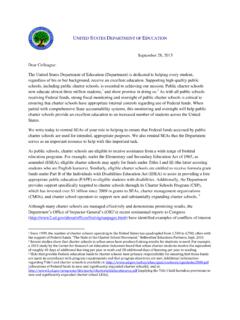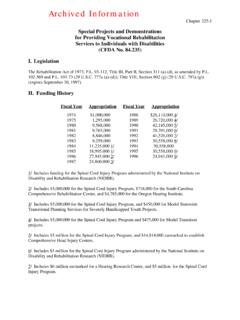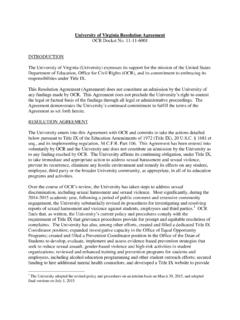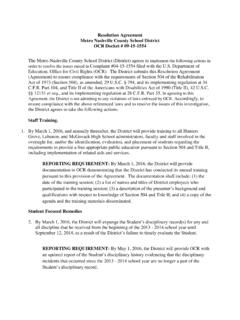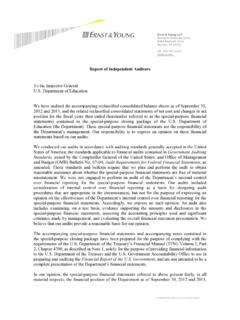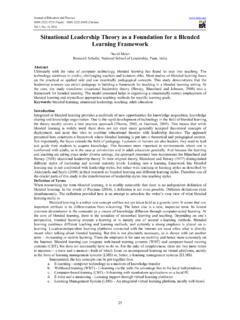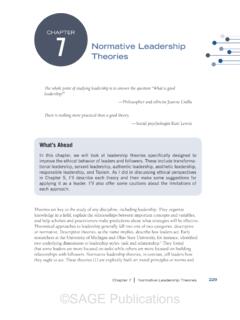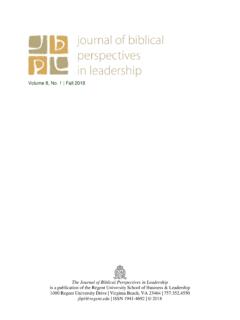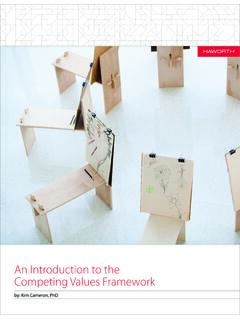Transcription of Conceptualizing Capacity Building (PDF)
1 1 Conceptualizing Capacity Building Capacity Building can be defined straightforwardly as a process for strengthening the management and governance of an organization so that it can effectively achieve its objectives and fulfill its ,2 We can, however, add depth to the definition by broadening what is meant by Capacity . Grantmakers for Effective Organizations (GEO)3 developed a definition of effectiveness that grantees and federal, state, or local governments have adopted as a definition of capacity4,5: The ability of an organization to fulfill its mission through a blend of sound management, strong governance, and a persistent rededication to achieving results. By merging the straightforward definition of Capacity Building with the GEO definition of effectiveness, a more comprehensive definition of Capacity Building , which will be useful to technical assistance (TA) providers, emerges: Capacity Building is an intervention that strengthens an organization s ability to fulfill its mission by promoting sound management, strong governance, and persistent rededication to achieving results.
2 Furthermore, having the ability to fulfill a Capacity Building mission means that an organization has (a) sufficient numbers of staff who possess the necessary knowledge and skills, (b) appropriate and adequate technical and management systems, (c) suitable physical infrastructure, and (d) ample financial and other resources. Thus, Capacity Building is not limited to training personnel or the provision of TA, but may include overhauling systems, remodeling physical infrastructure, recruiting new personnel, and improving the efficiency of the use of existing Actors Three actors are typically important when a government agency or other organization is undertaking Capacity Building : the target agency or organization, the funder of that agency or organization, and a TA provider.
3 Ideally, personnel at all levels of the target agency or organization will be invested in the Capacity Building process and be willing to make the changes needed this likely includes board members, managers, and the lowest level of The funder must see the need for Capacity Building and be willing to provide sufficient financing and 1 Beesley, A. D. & Shebby, S. (2010). Evaluating Capacity Building in education: The North Central Comprehensive Center. Paper presented at the Annual meeting of the American Educational Research Association, Denver, Colorado, May 2010. 2 Connolly, P. &York, P. (2002). Evaluating Capacity - Building efforts for nonprofit organizations. Organization Development Practitioner, 34(4): 33-39.
4 3 Grantmakers for Effective Organizations. (2003). Grantmakers for Effective Organizations: Theory of change. Prepared by Steven La France and Rick Green. 4 Beesley & Shebby, 2010. 5 Wing, K. T. (2004). Assessing the effectiveness of Capacity - Building initiatives: Seven issues for the field. Nonprofit and Voluntary Sector Quarterly, 33(1): 153-160. 6 Wing, 2004. 7 Mil n, A. (2001). What do we know about Capacity Building ? An overview of existing knowledge and good practice. Geneva, World Health Organization. Conceptualizing Capacity Building January 2015 2 other The TA provider, as an external entity, can help at all steps, including providing training or TA and evaluating the process. It is essential, however, that the TA provider work with the target organization and the funder instead of doing the Capacity Building work for them.
5 Process Capacity Building can be seen as a change process targeted at aligning beliefs and new or refined practices with desired growth targets within an To be effective, organizational Capacity Building requires deliberate and planned change. Some organizations make the mistake of training staff in new skills without carrying out the necessary follow-up to make sure those skills are being utilized Others focus on training staff without addressing issues in other areas, such as an outdated computer system or a physical infrastructure that does not allow staff to implement new skills or innovative Best practices for Capacity Building include long-term, multi-level approaches, coaching, and ,13 Importantly, with regard to the long-term nature of Capacity Building , funding cycles can be a challenge for organizations and government agencies receiving grant funding to effect changes.
6 If supported by a typical five-year grant, the funding period may not be long enough to implement large-scale Capacity Building , yet funders may not be willing or able to finance processes that will not be completed within a given funding cycle. In a similar way, the grant cycle also may affect TA providers that receive grants for the purpose of providing TA on Capacity Building to other organizations, including government agencies. Additional constraints for government agencies can include existing rules and procedures established for their operations, which may limit what they can change, how they can go about changing, and even the structure of the When designing and evaluating a technical assistance initiative aimed at Building Capacity , four dimensions of Capacity Building must be considered: Types of Capacity .
7 In the field of education, change usually involves developing four types of Capacity : human, organizational, structural, and Human Capacity includes both the intellectual Capacity ( , knowledge, skills) and the will ( , interest, patience, and persistence) to implement needed changes. Organizational Capacity involves interaction, collaboration, and communication among people within the organization. Structural Capacity 8 McKinsey & Company. (2001). Effective Capacity Building in nonprofit organizations. Washington, DC: Venture Philanthropy Partners. 9 Harsh S. (2010). Chapter 1: Gaining perspective on a complex task: A multidimensional approach to Capacity Building . In S. Harsh, K. Bradley, K. Good, & J. Ross (Eds.)
8 (2010), Capacity Building technical assistance: Change agent analyses ( ). Charlestown, WV: Edvantia, Appalachia Regional Comprehensive Center., p. 2. 10 Fixsen, D. L., Naoom, S. F., Blase, K. A., Friedman, R. M. & Wallace, F. (2005). Implementation Research: A Synthesis of the Literature. Tampa, FL: University of South Florida, Louis de la Parte Florida Mental Health Institute, The National Implementation Research Network (FMHI Publication #231). 11 Fixsen, D., Blase, K., Horner, R. & Sugai, G. (2008). Taking EBPs to Scale: Capacity Building . Presented at the PBS Conference 2008. 12 Ibid. 13 Barrett, S., Kincaid, D. March, A. 2013. Building Coaching Capacity . Presented at the 2013 PBIS Leadership Forum. 14 Mil n, 2001. 15 Century, J. R. (1999, April). Determining Capacity within systemic educational reform.
9 Paper presented at the annual meeting of the American Educational Research Association, Montreal, Quebec, Canada. Conceptualizing Capacity Building January 2015 3 exists independently of the people working within the organization and includes elements like policies, procedures, and practices. Material Capacity includes the fiscal resources, materials, and equipment needed to meet organizational goals and implement change. The four types of Capacity are interdependent, and growth in one area is dependent on growth in Consequently, while a particular Capacity - Building initiative might focus on one type of Capacity , all four types of Capacity must be aligned and addressed if the organization is to meet its goals for Levels of Capacity . In addition to attending to the type of Capacity to be developed, organizations must institute changes targeted at Building different levels of Capacity information, skills, structures, and processes if they want to ensure that the desired changes are fully As the organization moves through the various stages of Capacity Building , new information and increasingly sophisticated skills, structures, and processes are Stages of Capacity Building .
10 Based on a review of the literature, Harsh and her colleagues at the Appalachian Regional Comprehensive Center (ARCC) identified four stages of Capacity Building : Exploration, Emerging Implementation, Full Implementation and Exploration. In this stage, key actors identify the need for change; determine the desired Capacity ; and identify the knowledge, skills, structures, and processes that need to be in place to achieve the desired Capacity . An important task during this stage is to evaluate the current Capacity of the organization, possibly including staff skills, number of staff, computer and other systems, infrastructure, and other resources. The Capacity gap is the difference between existing Capacity and needed Capacity . Emerging Implementation.
